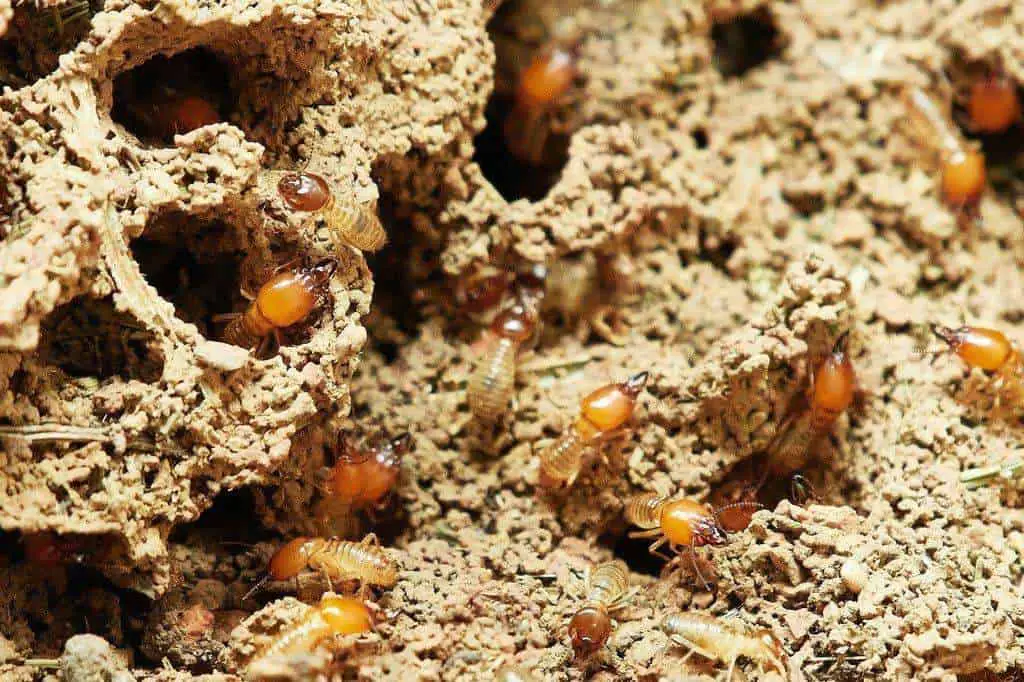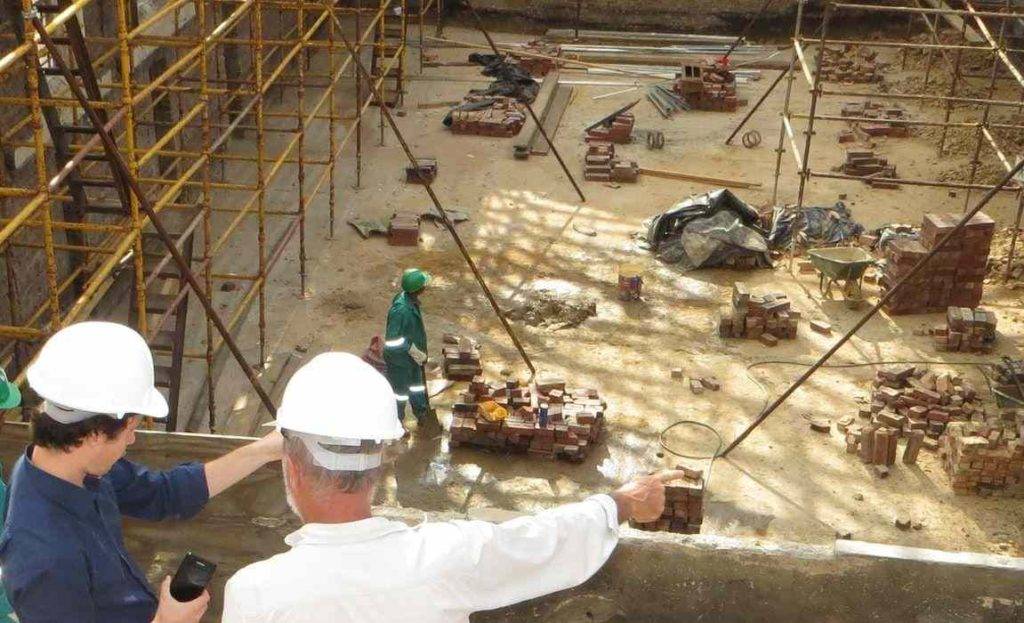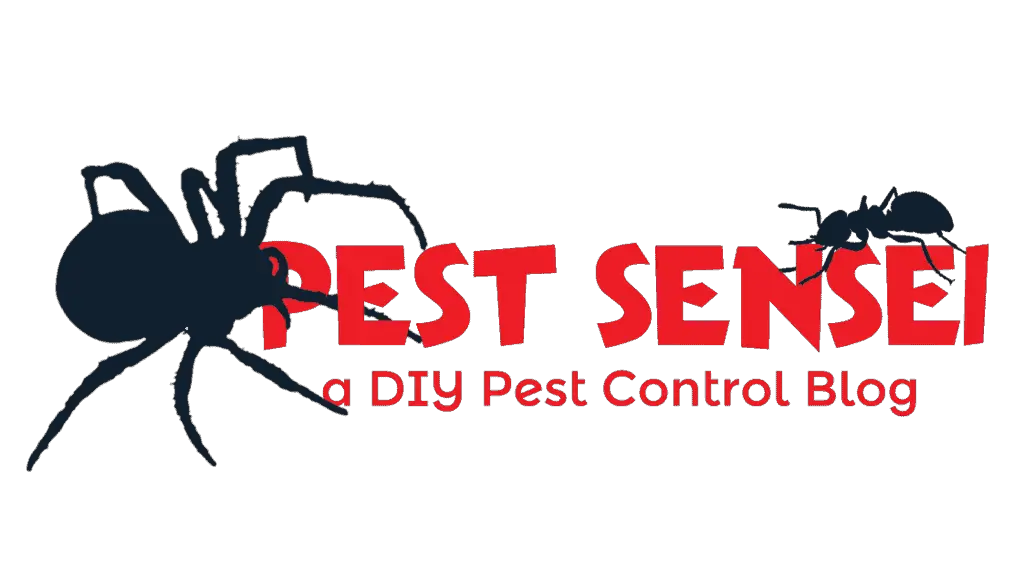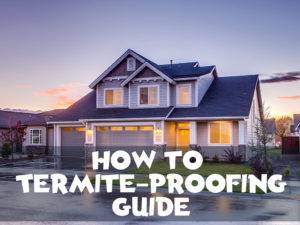The worst that could happen to a homeowner is probably destruction of his/her house. Besides fire and natural disasters, termites can also destroy your house. Unfortunately, termites are generally not covered by insurance. In this guide, I’ll tell you how to prevent termite infestation in your house via termite proofing.
To prevent termite infestation, inject termiticide into soil to form a barrier that kills invading termite. Treat all unfinished wood in your house. Where practical, reconsider the materials used to furnish your house and use minimum wood. Lay physical or chemical barriers if you are erecting a new building.
Continue reading for more details. If you have an existing infestation, do refer to my guide on how to get rid of termites.
How Termites Invade Your House

To know how to termite-proof your house, you must first understand how termites invade your house. Note that we are talking about subterranean termites here, not drywood termites, which is another topic of its own.
As their name implies, subterranean termites are underground creatures. They spend their entire life in the darkness, inside the soil. Since our houses are built on the ground, termites can easily invade from the bottom of our house.
So, how do termites get past the concrete slab underneath your house? Can they bite through concrete? No, they can’t bite through concrete. Instead, subterranean termites invade your house via the gaps and cracks in building structures, eg. around service pipes, foundation walls, and joints.
Because of the way houses are built, there will be hidden gaps in the houses that can be utilized by subterranean termites as a passage. As the house ages, there will also be cracks in the building foundation, which creates more highways for the termites to invade your house.
Subterranean termites can also invade from above ground by building mud tubes and travel within the mud tubes. Unlike the underground routes, mud tubes can be easily noticed, which allows you to take prompt actions.
Hence, the primary focus on termite proofing is on the concealed entry points.
Post-construction Termite Proofing – Corrective Soil Treatment
If your house has been built and furnished, termite proofing becomes challenging. The choice is limited to corrective soil treatment.
Corrective soil treatment involves treating both the soil underneath the concrete slab, followed by trenching around the exterior walls of your house. It forms a non-continuous chemical barrier underground to kill invading termites.
How Corrective Soil Treatment Works?
Because the house has been built, the only way to treat the soil underneath is by drilling holes. Holes are drilled about 1 foot apart along the inner perimeter walls of the building, which is one of the common intrusion points. Termiticide is then injected into the holes.
Ideally, the termiticide spreads evenly to form a barrier in the soil. However, different types of soil absorb and hold liquid differently, and the soil composition at each hole is different. Hence, the resulting barrier is not continuous, and has gaps where the termites can safely utilize.
That’s why using non-repellent termiticides for corrective soil treatment is important. By having non-repellent termiticide, termites can’t detect the treated soils, and hence will continue to move through the treated soils and ultimately be killed.
Before they die, affected termites pass the termiticides to their nestmates through grooming. This causes more termites to be killed, and the termite colony is suppressed. Certain termiticides affect the muscles of the termites, and reduce their feeding activity.
Treatment along the external perimeter of the building is easier because you don’t have to drill. You simply need to trench the surrounding soil with termiticide to kill any termites that invade through the treated soil.
A good termiticide binds strongly with the soils. A properly done treatment can give you protection for years.
Can I DIY Corrective Soil Treatment?
I don’t recommend DIY corrective soil treatment because you need to drill your floors. It is not easy to drill tiles or marbles without breaking them. You will need expensive tools for drilling, cable detectors to avoid hitting underground pipes and cables, and a system to pump the right amount of termiticide into the soil.
It’ll be cheaper if you engage a service provider to do the job. On top of that, many service providers provide some sort of warranty for the treatment, which is really useful.
You can, however, DIY the termiticide reapplication after the warranty period, or choose to extend the warranty. Reapplication is cheaper and easier because no drilling is required. But, you still need an injector to inject the termiticide into the soil.
What are the Disadvantages of Corrective Soil Treatment?
A major risk with corrective soil treatment is hitting the pipes and cables when drilling. Cable detectors can’t detect small pipes and PVC pipes. The risk can be avoided if you have the pipe and cable layout of your house, although I doubt you have that.
Due to the presence of pipes or cables, as well as the building design, there are places where you can’t drill and treat. That leaves a bigger gap in the chemical barrier.
When drilling, there is always a risk of breaking the tiles. You might not be able to replace the broken tile with an exactly identical one.
Another issue with corrective soil treatment is patching the holes. While you can patch the hole with the nearest color as the surrounding, the difference in color is always noticeable.
Wood Treatment
Wood treatment can be done on unfinished wood to protect it from termite. Unfinished woods are those not coated with varnish or stain..
I recommend using Bora-Care because it offers a good penetration into wood, providing long-lasting protection. Bora-Care contains disodium octaborate tetrahydrate which is relatively safe for humans and pets. No retreatment is required.
Spray your unfinished furniture, and beam in crawl space and roof void with Bora-Care. The chemical will be absorbed into the wood, and kill any termites (and carpenter ants, wood borers) that try to damage the wood. It also prevents damage by fungi.
Pre-construction Termite Proofing

Pre-construction termite proofing is often more effective than post-construction proofing. This is mainly because you can cover every inch of soil underneath the building or every gap that the termite may use, unlike post-construction where you can cover only the perimeter.
If you plan to build or rebuild a house, there are at least four options for termite proofing. These treatments can last for more than 10 years (depending on products). Some products or service providers offer up to a 50-year warranty, where they will cover costs for repairing damages and re-treatments.
Termimesh
Termimesh is a non-toxic barrier installed around concealed entry points, eg. service pipes, perimeter walls, and joints, to prevent termite entry. It was evaluated and accepted by the International Code Council as a termite physical barrier system.
Termimesh is made of durable marine-grade stainless steel mesh to last for many years. The opening of the mesh is small enough so that the termites can’t squeeze through. Having such a physical barrier prevents termite from invading your house from the underground.
Installation of Termimesh is done by trained personnel familiar with building structures. This is crucial, because all potential entry points need to be identified and sealed.
Pre-Construction Soil Treatment
Pre-construction soil treatment involves treating the soil with termiticides before pouring the concrete. It creates a layer of termiticide below the concrete and around the perimeter of the building.
The termiticide-treated soil kills the foraging termites that come into contact with it. Before they die, the termites will pass the termiticide to their nestmates when they groom each other. As a result, the colony is slowly suppressed.
There are 2 types of termiticides used in soil treatment: repellent and non-repellent. Repellent termiticides repel the termites, but may prompt them to find other entry points. Meanwhile, termites can’t detect non-repellent termiticides, and continue to forage through the treated soil, and hence pick up the termiticides.
Over time, treated soils move due to vibration, soil erosion, water seepage, etc. This causes the treated barrier to become non-continuous. If you use repellent termiticides, termites can find the safe route formed by soil movement, and use it to invade your house. Hence, you should always choose a non-repellent termiticide for soil treatment.
Termite Reticulated System
Reticulated system is a series of pipes installed underground, below the concrete of a building. It allows homeowners to reapply termiticides in the soil from a designated inlet without drilling, after the building is erected.
Similar to soil treatment, always opt for non-repellent termiticide.
Termiticide-treated Sheet
Termiticide treated sheet is foam or plastic sheet impregnated with termiticide. The sheet is buried in the soil just underneath the concrete. It serves as a chemical and physical barrier to stop the termite from invading. All the termiticide-treated sheets that I’ve seen are repellent.
Compared to direct soil treatment, the termiticide is held strongly by the sheet, not by the soil. There is a very low risk of termiticide leaching into water sources and soil.
Termite Baiting System
Termite baiting system is sometimes classified as a termite proofing and prevention method. I don’t see it as a pure prevention or proofing method because of how it works.
In the termite baiting system, baits are installed around your building. They act as landmines. If the invading termites hit the baits, they are killed. There are chances where they don’t hit the bait though.
If you want to understand more about the termite baiting system, check my guide here. Unlike other prevention methods, this is something that you can DIY.
Comparison of Termite Prevention Treatments
Here is a table detailing the differences between the 6 termite prevention treatments for comparisons. You can get a quote from your local service providers on Networx.
| Features | Corrective Soil Treatment | Termimesh | Soil Treatment | Reticulated System | Termiticide Sheet | Termite Baiting System* |
| Mechanism | Chemical | Physical | Chemical | Chemical | Physical & Chemical | Chemical |
| Kill termites? | Yes | No | Yes | Yes | Yes | Yes |
| Pros | Can be done after the building is built | Long-lasting, protects all possible underground entry points | Cheap | Allows re-treatment. Better coverage than corrective soil treatment | Protects all possible underground entry points | Targeted use of termiticides, higher success rate of colony elimination |
| Cons | Unsightly patches and potential damage to tiles, underground pipes and cables, only covers areas that can be treated | Expensive, Must be laid before construction | Can only be done once | Must be laid before construction | Must be laid before construction, usually repellent – prompting termites to search for other entry points | Termites may bypass the bait stations |
| Re-treatment | Required and possible | Not required | Required but not possible | Required and possible | Not required | Required and possible |
| Hao’s recommendation | 3 | 5 | 4 | 4 | 2* | 5 |
*I give it a 2 because most of them are using repellent, which is not as effective as non-repellent in termite control.
You can combine different methods of prevention if you have the budget. For instance, treat the soil before laying Termimesh, or treat the soil before laying a reticulated system.
Warranty
Most termite prevention service providers offer some sort of warranties. Some may cover re-treatment or spot treatment only, while others may cover damages caused by termite infestation.
Make sure you read the clauses carefully to set your expectations right. There might be some conditions that you need to comply with to be eligible for warranty. One of the most basic requirements is having an annual termite check.
Reduce the Use of Woods

Ideally, by replacing all the wooden structures with non-wooden ones, you can prevent termites infestation, since there is no woods for the termites to attack. However, it is impractical, especially if your house is already built because it is expensive.
If you decide to do a full renovation or if you are building your house, these are some wooden structures that you should consider replacing with non-wood counterparts:
- Baseboard
- Crown molding
- Support beam
- Deck
- Porch steps
- Pillar
- Door frame
- Window frame
- Flooring
- Built-in cabinets
Final Words
No termite proofing programs are bullet-proof. It is all about lowering the risks. You can choose to do nothing like most people do, or put in some effort to protect your house. It’s up to you. If your house is hit by termite, be sure to check out my guide on how to get rid of termites.
If you like this article, do share it with your friend.



